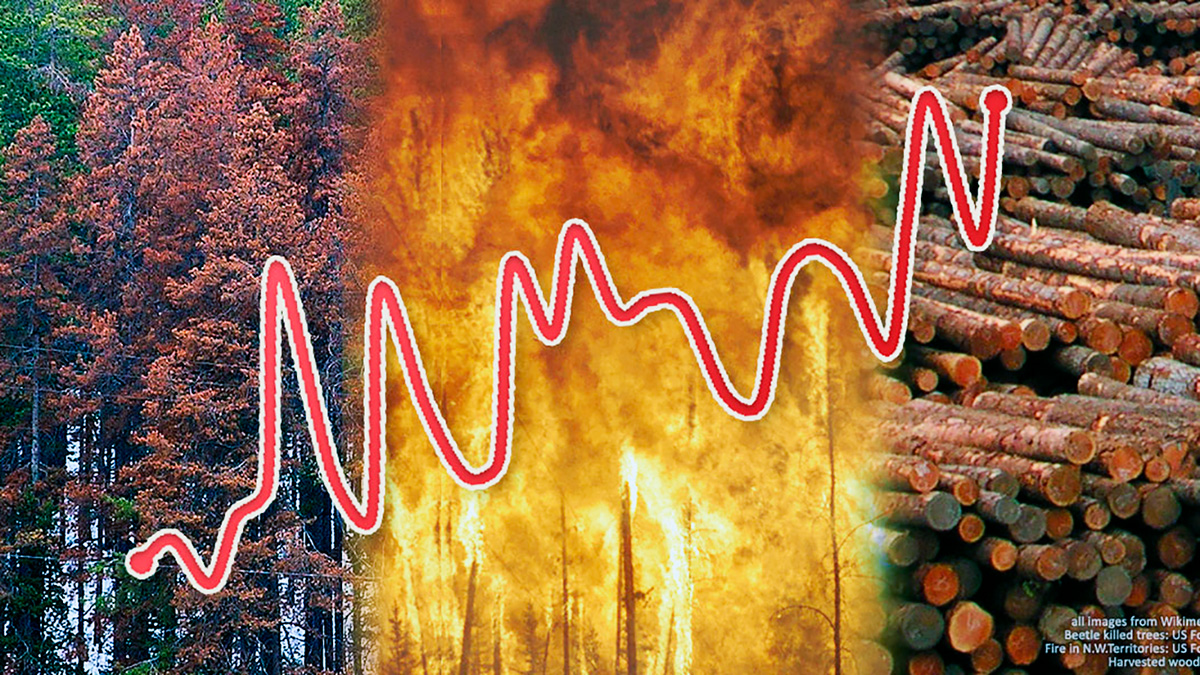An international study, with the participation of the Image Processing Laboratory (IPL) of the University of Valencia and based on Machine Learning, has identified the main factors of vulnerability to climate change in European forests. The data provided by the algorithms would contribute to improving the management of these natural ecosystems. The work is published in Nature Communications.
Led by the European Commission’s Joint Research Center (JRC), the study – which has the participation of the Max Planck Institute, the University of Florence, the University of Helsinki, and the University of Valencia – addresses the growing risks associated with the climate in European forests. The work exploits a large volume of satellite and environmental data and, with the help of machine learning, identifies the main factors that increase the vulnerability to climate change of European forests. Algorithms show that 60% of European forests are increasingly vulnerable to the effects of winds, fires, and insect pests. The algorithms also show the characteristics that make each type of forest more or less resilient, which could contribute to better management of these natural ecosystems in order to improve their resilience.
More than half of Europe’s forest biomass could be lost in a few decades due to climate-induced natural disturbances, such as fires or insect outbreaks, according to the study published in Nature Communications. Forests have always been affected by disturbances such as fires, strong winds and outbreaks of natural pests, but climate change and transformation in land uses can increase these threats. Hence the importance of quantifying the vulnerability of forests to such disturbances, as well as their trends over time and on large geographical scales such as the European continent.
The study quantifies and maps the vulnerability of European forests to these three disturbances - fire, wind and insect pest outbreaks - between 1979 and 2018, through the integration of disturbance data and satellite observations and through the extensive use of machine learning algorithms. And the vulnerability is calculated on the basis of the amount of forest biomass that is lost after a given disturbance.
The authors estimate that almost 60% of European forest biomass – more than 33 billion tonnes – is highly sensitive to strong wind gusts, fires, insect outbreaks or a combination of these. In particular, vulnerability to insect outbreaks has increased in recent decades, especially in the faster-warming northern forests, such as parts of Scandinavia and Russia, which have experienced increases in vulnerability to the surrounding insects of about 2% per decade.
The proposed methodology is based on a data-driven machine learning approach – Earth Observations, Climate Variables, and Forest Disturbance Database – and is therefore reproducible and applicable on a large scale.
“Machine learning has played an important role in this study”, says Gustau Camps-Valls, coordinator of the Image and Signal Processing (ISP) group at the IPL of the University of Valencia, which has been awarded two ERC projects in this field. “We train algorithms with massive amounts of data to predict forest vulnerabilities in Europe over the last 40 years. This could not have been done with traditional statistical approaches, or at least with that accuracy. And then we analyse and interpret this data to respond to why and when forests become more vulnerable”, Camps points out. “We did this through a new strategy to classify these impacts into space and time, so we obtained robust measures of the relative relevance of each variable”, he adds.
The study identifies the structural properties of each forest according to local climate and topographic conditions, factors that influence the vulnerability of forest masses to disturbances. And he concludes, for example, that stands with taller, older trees tend to suffer insect damage, especially during droughts. The forests of cold climates of Finland, northern Europe of Russia and the Alps (Italy, France, Switzerland, Austria) and, to a certain extent, the warm and dry forests of the interior of the Iberian Peninsula (Spain, Portugal) were identified as particularly fragile ecosystems; they are characterised by a high general vulnerability to natural disturbances and a progressive intensification due to climate change.
These results allow characterising the vulnerabilities of each type of forest, as well as the most impactful factors for its health. The results could help to improve land management practices, so that European forests become more resilient to the current scenario of global change.
Reference:
Emergent vulnerability to climate-driven disturbances in European forests.
Forzieri, G. and Girardello, M. and Ceccherini, G. and Spinoni, J. and Feyen, L. and Hartmann, H. and Beck, P.S.A and Camps-Valls, G. and Chirici, G. and Mauri, A. and Cescatti, A. (2021). Nature Communications


